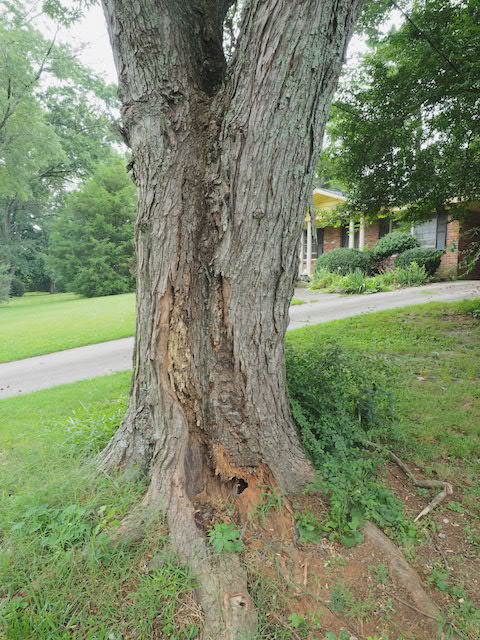
Our article, "Reading a Tree for Risks and Hazards," shows some of the more obvious signs of a tree with problems. These are easy to understand and can be seen with the naked eye. Some conditions we describe indicate that your tree has a problem that should addressed by a professional arborist immediately. We also show you some trees where the "problems" aren't problems at all, but rather normal and natural occurrences that don't pose a threat to the tree.
We chose our pictures carefully to help you understand what we're talking about. Click on the dots below the images to see all the pictures in each section.
Caution! Do not substitute this short article for getting the opinion of a professional! An experienced certified arborist can spot trouble that the untrained eye will not see, and can give you advice that goes well beyond the scope of our article and, probably, your own knowledge.
How to Inspect Your Tree(s) Using the “Four Zone Approach”
To inspect a tree thoroughly, examine all four of its "zones":
Zone 1: The tree as a whole, seen from a distance;
Zone 2: The ground, including the visible roots and ground around them, and the first three feet of the trunk;
Zone 3: The trunk -- the main vertical stem(s) of the tree;
Zone 4: The crown -- the branches and leaves, including where the branches connect to the trunk, and each branch all the way out to its tips.
